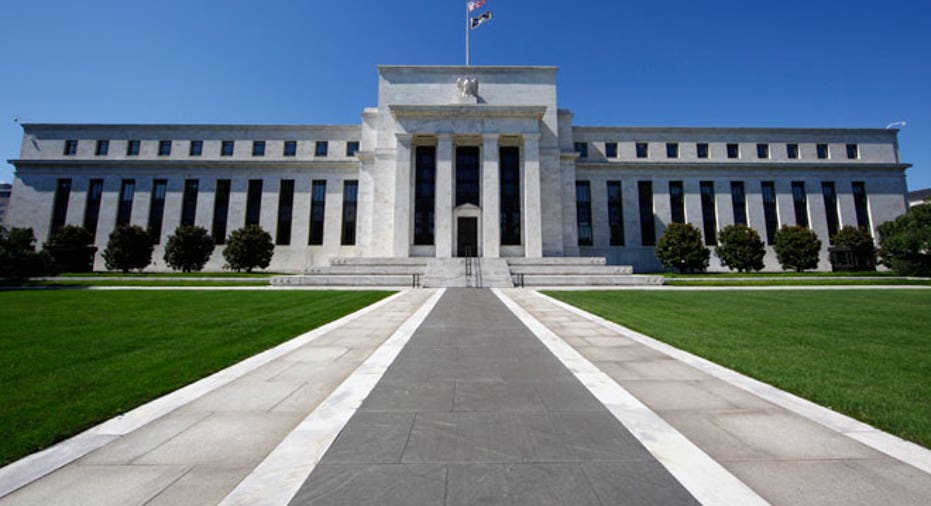Fed Holds QE Steady, Sees 'Moderate' Growth

The Federal Reserve stood pat on Wednesday at the conclusion of two days of meetings, keeping its loose fiscal policies in place and pledging to do more or less if necessary.
The Fed held the pace of its asset-purchase program steady at $85 billion a month, and said it will hold short-term interest rates at historic lows until the unemployment rate falls to 6.5%. The central bank also said it sees the economy growing at a ‘moderate’ pace, but unemployment remains ‘elevated.’
The Fed said fiscal policy out of a deadlocked Washington, D.C., is “restraining economic growth.”
Stocks essentially stood still on the announcement. The Dow Jones Industrial average, in negative territory all day, was down more than 100 points shortly after the announcement.
As was widely expected, Fed members said the central bank is willing to add to its easy money programs if the economy doesn’t gain strength in the next few months. That’s a big shift from only a month ago when economic data, including a string of monthly jobs reports, showed mild gains.
But all that changed with the March jobs report, which showed a paltry increase of just 88,000 jobs. Fed members in speeches and interviews in recent weeks have hinted that they’re not opposed to expanding the existing bond buying programs, increasing the amount of purchases from the current level of $85 billion in U.S. Treasuries and mortgaged backed securities a month.
The Fed also said it would scale back its programs if economic circumstances warranted such a move.
A weak jobs report released Wednesday morning by payroll firm ADP only added to a growing sense that the U.S. economy refuses to gain traction. The ADP National Employment Report said the private sector added just 119,000 jobs in April, an ominous forecast for Friday’s government jobs report for April.
A report on manufacturing activity also released Wednesday showed that important sector slowed down last month, as well.
Analysts had predicted the Fed’s inactivity ahead of the announcement. "I don't think they'll give any indication they'll be exiting their bond buying strategy any time soon," said Peter Cardillo, chief market economist at Rockwell Global Capital.
A third round of bond buying, known as quantitative easing, or QE III, was adopted last fall as a measure to keep long-term interest rates -- notably mortgages -- low in order to spur lending and broader economic activity.
The Fed has essentially tied its policies to the housing and labor markets under the notion that a strong housing sector will spread economic growth across a wide spectrum of industries, including construction, financial services and retail. The end result of that domino-effect is ostensibly job creation.
The job market seemed to be gaining traction through the winter but then lost steam last month.
The Fed has said it will keep interest rates at near zero, where they’ve been since December 2008, and continue to buy bonds until unemployment falls to 6.5% or inflation rises to 2% annually. Both thresholds seem a long way off.
Economists expect the unemployment rate to hold steady at 7.6% when the April jobs report is released on Friday.
Since QE III was initiated last fall unemployment has continued to tick slowly lower, a good thing. But lately inflation has also fallen to a level that is making the Fed uncomfortable. The Fed likes to keep inflation at about 2%, an indication that wages and demand are rising. But wages have been almost stagnant in recent months and demand is low, pushing inflation to nearly 1%.
The talk a month ago was about gradually scaling back on bond purchases so as not to shake markets too badly. Stock markets have surged as the Fed has pumped money into the economy and any suggestion that quantitative easing may be turned off has prompted stock selloffs.
“The Fed looks at the stock market as a gauge of their success and boy does it look like QE is working. Housing also supports that QE is working,” said Peter Tchir, founder of TF Market Advisors, in a note to clients.